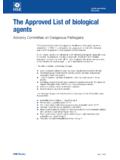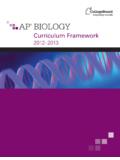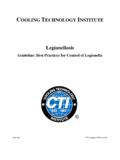Transcription of Practice Test #2 - Biotechnology & Medical Forensics
1 Practice Test #2. True/False Indicate whether the statement is true or false. ____ 1. Colony size is dependent on many characterisitics. One of these is the type of organism. ____ 2. Colony size is dependent on many characterisitics. One of these is the growth medium. ____ 3. Colony size is dependent on many characterisitics. One of these is the culture medium characteristics. ____ 4. Possible colony textures include; shiny to dull, smooth to wrinkled, rough, granular, and mucoid. ____ 5. Elevation is the cross sectional shape of the colony. ____ 6. Color is also called Chromogenesis (pigmentation).
2 ____ 7. Colonies can vary in their elevations both between microorganisms and growth conditions, and within individual colonies themselves. ____ 8. Colony morphology is a way scientists can identify bacteria . ____ 9. PCR stands for Polymerase Chain Reaction. ____ 10. PCR is used to separate DNA according to size. ____ 11. DNA gel electrophoresis is the process that can be used to make a DNA fingerprint. ____ 12. Restriction enzymes are used to make copies of the DNA in PCR. Multiple Choice Identify the choice that best completes the statement or answers the question. ____ 13. Which of the following is NOT a characteristic of bacterial colonies that can be used to identify a bacteria ?
3 A. Colony size: e. Flavor b. Margin f. Elevation c. Color g. Shape d. Texture ____ 14. Which of the following is NOT a type of Light Transmission: a. transparent (clear) e. Translucent b. opaque f. All of these. c. frosted g. None of these. d. iridescent ____ 15. One descriptive prefix for the bacteria in the picture below would be: a. Diplo c. Strepto b. Tetra d. Staphlo ____ 16. One descriptive prefix for the bacteria in the picture below would be: a. Diplo c. Strepto b. Tetra d. Staphlo ____ 17. Which of the descriptive prefixes below would be best to use for the following picture?
4 A. Diplo c. Strepto b. Tetra d. Staphlo ____ 18. The T steaking method is used for doing what? HINT: look at the picture below: a. Measuring size in a microscope. b. Setting up a gram stain. c. Streaking bacteria onto an agar plate. d. Locating organisms in a microscope's field-of-view. ____ 19. What is the tool pictured below called? a. Scoop b. Innoculating Loop c. Wire Loop d. That thing we get to use to play with fire. ____ 20. The recipe on a bottle of powdered agar says to mix 25 g of powder with every 75 ml of distilled water. How much agar would you need to make 110 ml of agar?
5 A. g d. g b. g e. The answer is not here c. 2,750 g ____ 21. The recipe on a bottle of powdered agar says to mix 25 g of powder with every 75 ml of distilled water. How much agar would you need to make 517 ml of agar? a. g c. g b. 1,551 g d. g ____ 22. The recipe on a bottle of powdered agar says to mix 34 g of powder with every 115 ml of distilled water. How much agar would you need to make 312 ml of agar? a. g c. g b. g d. g ____ 23. The recipe on a bottle of powdered agar says to mix 12 g of powder with every 25 ml of distilled water. How much agar would you need to make 850 ml of agar?
6 A. g c. g b. g d. g ____ 24. In gel electrophoresis, the smaller the DNA fragments, the _____ they are to/from the wells. a. Closer c. More negative b. Farther d. More positive ____ 25. In DNA, adenine pairs with _____. a. Cytosine c. Uracil b. Guanine d. Thyamine ____ 26. In DNA, cytosine pairs with _____. a. Adenine c. Uracil b. guanine d. Thyamine ____ 27. The name of the process where DNA copies itself is called: a. Transcription c. Replication b. Translation d. Polymerasing ____ 28. Why must the original DNA be denatured before PCR can take place? a. The make extra nucelotides to be used in copying it.
7 B. To allow the DNA to leave the nucleus. c. To separate the 2 backbones of the DNA, to allow it to replicate. d. Because DNA needs to be cut up in order to separate them by size. ____ 29. What is the charge of the colored dyes used in our electrophoresis of food coloring? a. Positive c. Negative b. Neutral ____ 30. In gel electrophoresis, what would happen to the samples if the gel were flipped around so that the sample wells were put closest to the positive (red) electrode, instead of the negative (black). electrode? a. Nothing would change. b. The DNA would run in the opposite direction, an no band patterns would be created.
8 C. The longer pieces of DNA would now move further. d. All of the DNA would move to the same place in the gell. ____ 31. In DNA extraction, what is the primary purpose of the lysis (25% dishwashing soap) buffer? a. To make the DNA soluable in the water. b. To break the DNA up so it can be separated by size. c. To break up the cell membrane and nuclear membrane to allow the DNA to leave the cell. d. To create foam that allows the DNA to separate. ____ 32. Introns (are). a. the regions of genes to which transcription factors bind to control transcription. b. the regions of genes that code for amino acid sequences of proteins.
9 C. the same as enhancers. d. do not code for anything and are cut out of messenger RNA before it leaves the nucleus for translation. e. tiny robots used for microsurgery. Multiple Response Identify one or more choices that best complete the statement or answer the question. ____ 33. What are the materials used to make the gel for electrophoresis? (Choose 2). a. Agarose c. Salt Water b. Water d. TAE Buffer ____ 34. List two ways that electrophoresis separates DNA samples a. Length c. Depth b. Charge d. Color Matching Match the colony shape depicted below with its correct name. a.
10 Circular c. Irregular b. Filimentous d. Punctiform ____ 35. ____ 36. ____ 37. ____ 38. ____ 39. Match the type of colony MARGIN EDGE with its correct name. a. Lobate e. Errose b. Entire f. Curled c. Undulate g. Scalloped d. Filimentous ____ 40. ____ 41. ____ 42. ____ 43. ____ 44. ____ 45. ____ 46. ____ 47. ____ 48. ____ 49. ____ 50. Match these colony profiles with their correct name. To give you a point of reference, this is a flat colony: a. Flat e. Raised Margin b. Raised f. Crateriform. c. Convex g. Pulvinate d. Umbonate ____ 51. ____ 52. ____ 53. ____ 54. ____ 55. ____ 56.





